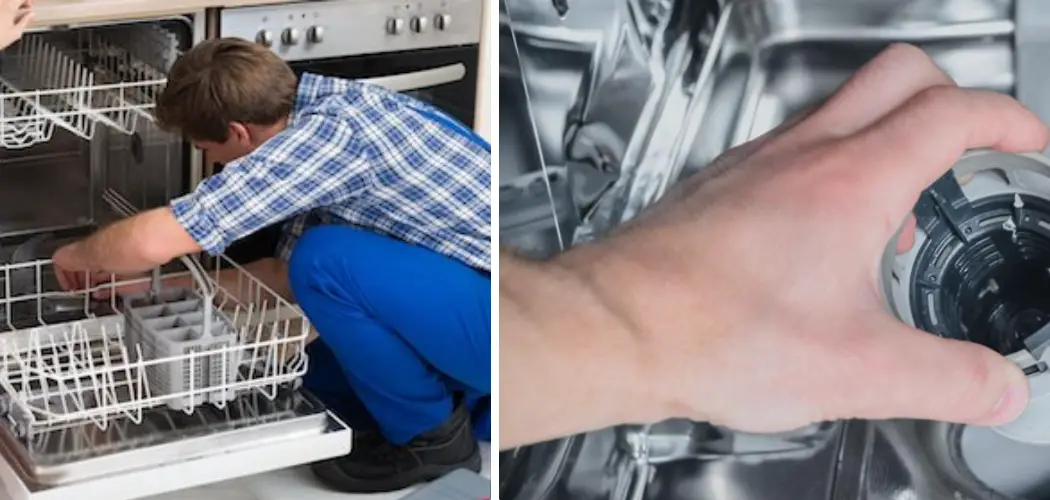Your dishwasher is probably one of the essential appliances in your home. It’s responsible for keeping all of your dishes clean and sparkling, so it’s essential to ensure that it’s always functioning correctly. Unfortunately, one common issue with dishwashers is a dirty or clogged heating element. If this happens, your dishwasher may not be able to heat water sufficiently, which will impact its ability to clean your dishes properly.
Fortunately, cleaning the heating element is a relatively straightforward process that you can do yourself. In this article, we’ll walk you through the steps for how to clean dishwasher heating element. Keep reading for more information!
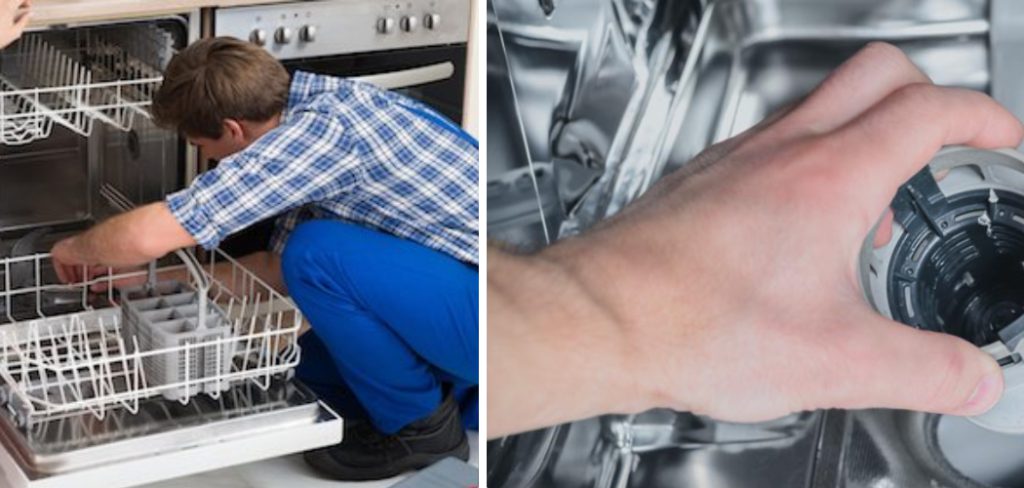
A Detailed Guide on How to Clean Dishwasher Heating Element
Method 1: Using Vinegar
If your dishwasher isn’t heating up properly, the problem is with the heating element. The good news is that it’s usually an easy fix; all you need is a little vinegar.
Things You’ll Need:
- White vinegar
- Bucket
- Dishcloth
Step 1:
The first step to cleaning your dishwasher heating element is to remove it from the dishwasher. This can be done by following these steps:
- Unplug the dishwasher
- Remove the screws that hold the heating element in place
- Lift the heating element out of the dishwasher
Step 2: Clean the Dishwasher Heating Element.
Once the heating element is removed, it’s time to clean it. This can be done by using a bucket of vinegar and a dishcloth. Soak the dishcloth in vinegar and use it to scrub the heating element until it’s clean. Before putting the heating element back in the dishwasher, be sure to rinse off any vinegar residue.
Step 3:
Once the heating element is clean, reinstall it by following these steps:
- Plugin the dishwasher
- Replace the screws that hold the heating element in place
- Lower the heating element into the dishwasher
- Reconnect any wires that were disconnected during
Congratulations! You’ve just cleaned your dishwasher heating element. If your dishwasher isn’t heating up properly after cleaning the heating element, there may be a more severe problem, and you should call a technician. But chances are, this simple fix will take care of the problem.
Method 2: Using Hairdryer to Remove Melted Plastic
If the melted plastic is not too hard to remove, you can try using a hairdryer. The heat from the hairdryer will soften the plastic and make it easier to remove. However, be very careful not to touch the heating element while turning it on, as it will be very hot.
Things You’ll Need:
- Hairdryer
- Bowl
- Toothpick or another sharp object
Step 1:
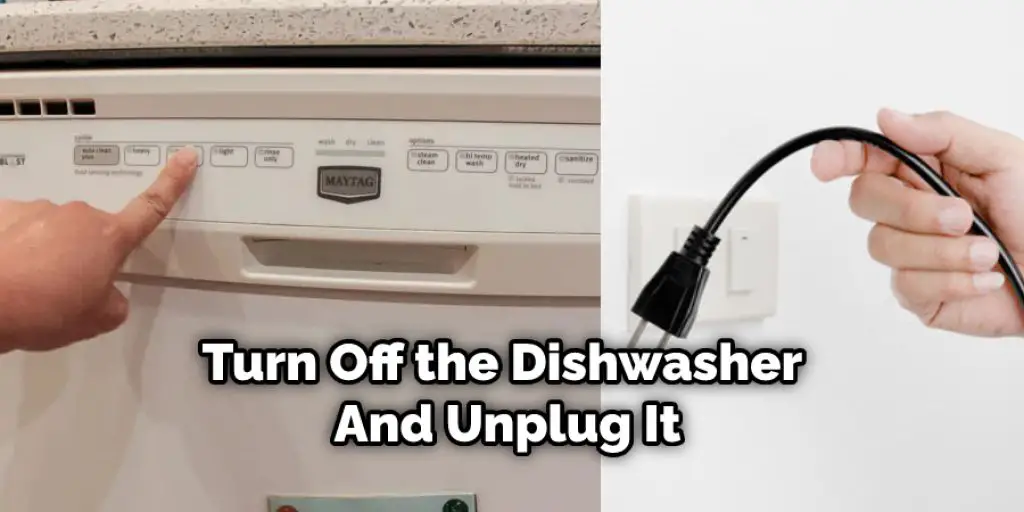
Before you do anything, make sure to turn off the dishwasher and unplug it. The last thing you want is for something to go wrong and for the dishwasher to start up while trying to remove the melted plastic.
Step 2:
Fill a bowl with hot water and place it on the top rack of the dishwasher.
Step 3:
Set the hairdryer to high heat and hold it about 6 inches away from the melted plastic.
Step 4:
Move the hairdryer around until the plastic softens and becomes easy to remove. Be very careful not to touch the heating element while it is turned on, as it will be very hot.
Step 5:
Use a toothpick or another sharp object to remove the melted plastic from the dishwasher. If there are any remaining pieces of plastic, you can use tweezers to remove them.
Step 6:
Rinse off any remaining plastic pieces and let the dishwasher dry.
Step 7:
Plugin the dishwasher and turn it on to see if everything is working correctly. If there are any problems, you can contact a technician for assistance.
Method 3: Using Blade to Remove Melted Plastic
If your dishwasher’s heating element has been damaged by melted plastic, you can try to remove the plastic using a blade. However, be very careful when doing this, as you could further damage the heating element.
Things You’ll Need:
- Blade
- Lemon
- Baking Soda
- Dish Soap
- Water
- Dishwasher safe gloves
Step 1:
Put on some dishwasher-safe gloves and fill a container with water. Add enough lemon juice to the water to make it acidic.
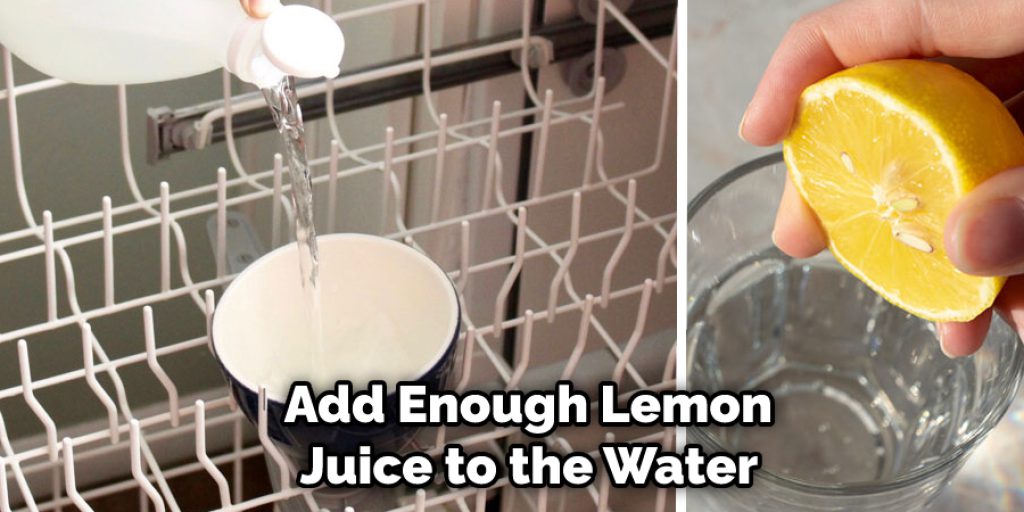
Step 2:
Shut off your dishwasher and unplug it from the wall. Next, remove the bottom panel of your dishwasher.
Step 3:
Locate the heating element and use the blade to cut through the melted plastic. Try not to damage the heating element any further.
Step 4:
Sprinkle baking soda over the melted plastic. Soak up any excess liquid with a cloth. Let it sit for 30 minutes.
Step 5:
Wash the area with dish soap and warm water. Rinse thoroughly. Replace the bottom panel of your dishwasher. Plug it in and turn it on.
Step 6:
Test the heating element by running a cycle with some hot water. If it doesn’t seem to be working, you may need to replace it.
Method 4: Using Calcium Lime Rust Remover
If your dishwasher’s heating element is stained with calcium, lime, or rust, you can use a calcium lime rust remover to clean it. These removers are available at most hardware stores and in either liquid or powder form.
Things You’ll Need:
- Calcium lime rust remover
- Bucket
- Rubber gloves
- Safety goggles
Step 1:
There are two types of calcium lime rust removers: acidic and non-acidic. Caustic removers are more effective but also more potent. Make sure to read the product label to determine which type you need.
Step 2:
When working with any chemical, it is essential to wear protective gear like gloves and goggles. This will protect your skin and eyes from any potential harm.
Step 3:
If the element is too large to fit in the bucket, you can place it in a trash bag and then put the trash bag in the bucket.
Step 4:
Make sure to follow the instructions on the product label when adding the remover to the bucket.
Step 5:
Leave the element in the bucket or trash bag and allow it to soak for 24 hours.
Step 6:
After 24 hours, remove the element from the bucket or trash bag and rinse it off with cold water.
Step 7:
Once you have rinsed off the calcium lime rust remover, allow the element to dry completely before putting it back in the dishwasher.
If your dishwasher’s heating element is stained with calcium, lime, or rust, you can use a calcium lime rust remover to clean it. These removers are available at most hardware stores and in either liquid or powder form.
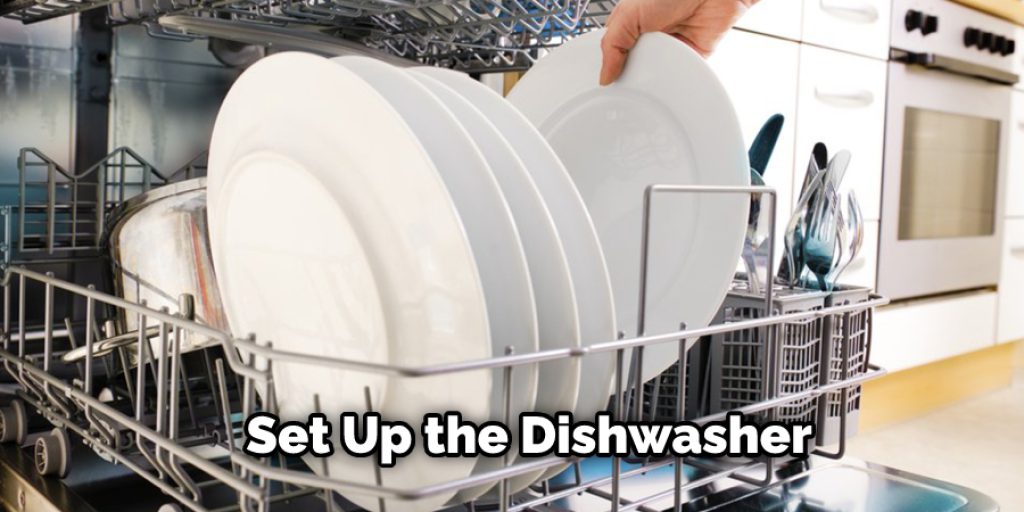
When working with any chemical, it is vital to wear protective gear like gloves and goggles. This will protect your skin and eyes from any potential harm.
Make sure to follow the instructions on the product label when adding the remover to the bucket. These methods will help in How to clean dishwasher heating element.
How to Descale a Dishwasher with Baking Soda?
Descaling a dishwasher with baking soda is an affordable and effective way to remove mineral buildup from the interior of your dishwasher. Hard water can result in a white residue on your dishes, so descaling regularly will ensure your dishes come out sparkling clean.
Here’s how you can descale your dishwasher using baking soda.
- Empty the dishwasher: It’s important to start with a clean dishwasher, so make sure there aren’t any dishes or utensils left in the dishwasher.
- Remove any debris or buildup: Remove any visible buildup or debris from your dishwasher spray arms and the interior of the dishwasher. You can do this with a damp cloth or sponge.
- Make a baking soda solution: Mix 1/4 cup of baking soda with 1 cup of warm water to make a paste.
- Apply the baking soda: Apply the baking soda paste to the interior of the dishwasher, especially the areas with buildup.
- Let it sit: Let the baking soda sit for 15-20 minutes to allow it to dissolve the mineral buildup.
- Run the dishwasher: After 15-20 minutes, run the dishwasher on a normal cycle to rinse away the baking soda and mineral buildup.
Descaling your dishwasher regularly will help to prolong the life of your dishwasher and ensure your dishes come out spotless. Plus, using baking soda is a natural and affordable solution that won’t harm the environment.
Tips and Warnings
The dishwasher heating element is one of the most important parts of the dishwasher. It is responsible for heating the water and cleaning the dishes. If it becomes dirty or clogged, it can affect the dishwasher’s performance. To clean it, you will need to remove it from the dishwasher. Be careful when doing so, as it is fragile.
Once you have removed the heating element, use a brush to clean off any debris or food particles. You can also use a vacuum cleaner to suck up any dirt or dust. If there is any build-up on the heating element, you can use a vinegar solution to clean it off. Be sure to rinse off the vinegar before reassembling the dishwasher.

If you are not comfortable removing the heating element, you can call a professional to do it for you.
Always unplug the dishwasher before cleaning any of its parts. Failure to do so could result in electrical shock.
The dishwasher heating element is an integral part of the dishwasher. It is responsible for heating the water and cleaning the dishes. If it becomes dirty or clogged, it can affect the dishwasher’s performance. To clean it, you will need to remove it from the dishwasher.
How to Remove Plastic Odor From Dishes?
One of the main problems people face when they use their dishwasher is the plastic odor from the dishes. This smell can be quite unpleasant, making your kitchen smell terrible.
The first thing you need to do is make sure that your dishwasher is clean. If there is any food or grease build-up on the interior of your dishwasher, it will cause the plastic odor to become stronger. Make sure to clean all of the surfaces inside your dishwasher and remove any debris from the bottom of the machine.
If you have a dishwasher tablet, put it in the dishwasher and run a complete cycle. This will help to remove any grease or food build-up. If you don’t have a dishwasher tablet, you can use vinegar. Pour half a cup of vinegar into the dishwasher and run a full cycle. The vinegar will help break down any grease or food particles causing the plastic odor.
If your dishwasher doesn’t have a built-in water softener, you can add a tablespoon of baking soda to the dishwasher. The baking soda will help soften the water, and it will also help remove any grease or food particles.
Finally, make sure that you air out your kitchen after using the dishwasher. The plastic odor can be quite strong, and it can linger in your kitchen for a while. Opening the windows and doors will help to get rid of the smell.
Conclusion
So, there you have it! How to clean dishwasher heating element in just a few simple steps. As you can see, it’s not as complicated as it may seem – and it’s worth doing to maintain optimal performance from your dishwasher. If you have any questions or comments, feel free to share them below – we’d love to hear from you!
You Can check it Out to Fill Gaps Around Heating Pipes

